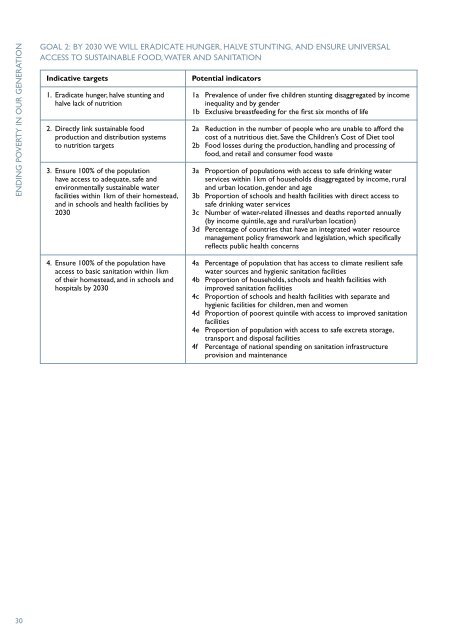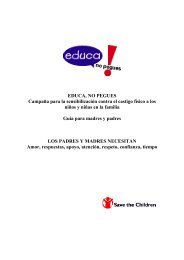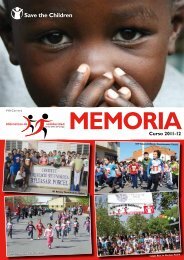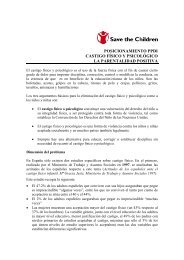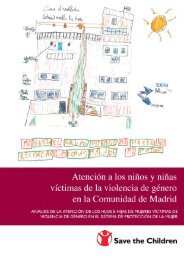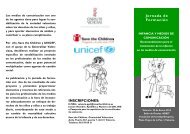ENDING poverty - Save the Children
ENDING poverty - Save the Children
ENDING poverty - Save the Children
Create successful ePaper yourself
Turn your PDF publications into a flip-book with our unique Google optimized e-Paper software.
<strong>ENDING</strong> POVERTY IN OUR GENERATION<br />
GOAL 2: BY 2030 WE WILL ERADICATE HUNGER, HALVE STUNTING, AND ENSURE UNIVERSAL<br />
ACCESS TO SUSTAINABLE FOOD, WATER AND SANITATION<br />
Indicative targets<br />
1. Eradicate hunger, halve stunting and<br />
halve lack of nutrition<br />
2. Directly link sustainable food<br />
production and distribution systems<br />
to nutrition targets<br />
3. Ensure 100% of <strong>the</strong> population<br />
have access to adequate, safe and<br />
environmentally sustainable water<br />
facilities within 1km of <strong>the</strong>ir homestead,<br />
and in schools and health facilities by<br />
2030<br />
Potential indicators<br />
1a Prevalence of under five children stunting disaggregated by income<br />
inequality and by gender<br />
1b Exclusive breastfeeding for <strong>the</strong> first six months of life<br />
2a Reduction in <strong>the</strong> number of people who are unable to afford <strong>the</strong><br />
cost of a nutritious diet. <strong>Save</strong> <strong>the</strong> <strong>Children</strong>’s Cost of Diet tool<br />
2b Food losses during <strong>the</strong> production, handling and processing of<br />
food, and retail and consumer food waste<br />
3a Proportion of populations with access to safe drinking water<br />
services within 1km of households disaggregated by income, rural<br />
and urban location, gender and age<br />
3b Proportion of schools and health facilities with direct access to<br />
safe drinking water services<br />
3c Number of water-related illnesses and deaths reported annually<br />
(by income quintile, age and rural/urban location)<br />
3d Percentage of countries that have an integrated water resource<br />
management policy framework and legislation, which specifically<br />
reflects public health concerns<br />
4. Ensure 100% of <strong>the</strong> population have<br />
access to basic sanitation within 1km<br />
of <strong>the</strong>ir homestead, and in schools and<br />
hospitals by 2030<br />
4a Percentage of population that has access to climate resilient safe<br />
water sources and hygienic sanitation facilities<br />
4b Proportion of households, schools and health facilities with<br />
improved sanitation facilities<br />
4c Proportion of schools and health facilities with separate and<br />
hygienic facilities for children, men and women<br />
4d Proportion of poorest quintile with access to improved sanitation<br />
facilities<br />
4e Proportion of population with access to safe excreta storage,<br />
transport and disposal facilities<br />
4f Percentage of national spending on sanitation infrastructure<br />
provision and maintenance<br />
30


